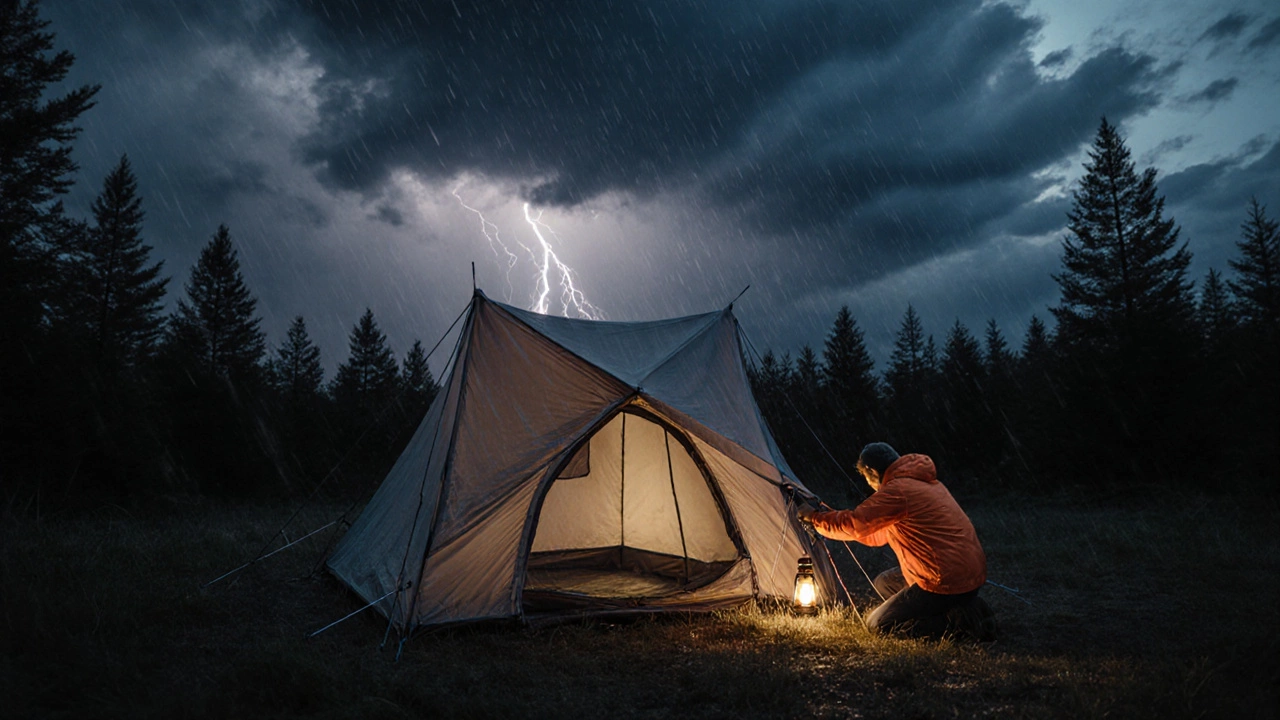Tent Comfort Issues: How to Stay Cozy on the Road
When dealing with Tent Comfort Issues, the set of problems that make sleeping in a tent uncomfortable, such as drafts, moisture, and cramped space. Also known as camp tent comfort problems, it affects anyone from weekend hikers to full‑time van lifers. Understanding the core causes lets you fix them before they ruin a night out in the wild.
Common Comfort Challenges and Fixes
One of the biggest culprits is Tent Ventilation, the flow of air through a tent that controls temperature and condensation. Proper ventilation reduces internal humidity, stops fogged windows, and keeps the interior from overheating on sunny days. Another essential layer is the Groundsheet, a waterproof barrier placed under the tent to block damp ground and improve insulation. Without it, moisture seeps up, making the floor cold and clammy. Finally, a good Sleeping Pad, an insulated cushion that separates you from the ground adds thermal protection and comfort, preventing aches after a long day of hiking.
These three elements create a clear semantic chain: tent comfort issues encompass tent ventilation, which requires a groundsheet for moisture control, and both rely on a proper sleeping pad to deliver a warm, dry sleep surface. When any link in the chain is weak, the whole system suffers.
Beyond the basics, the type of tent matters. A freestanding canvas model often offers better breathability than a lightweight nylon shell, but it can be heavier to haul. If you travel in a motorhome, you might prefer a quick‑setup pop‑up tent for extra sleeping space; just remember that pop‑ups usually have fewer vents, so you’ll need to add manual openings or use a rainfly with vent panels.
Weather protection plays a role, too. Rain can turn an already damp floor into a soggy nightmare. Using a groundsheet with a raised ridge prevents water from pooling under the tent. Pair it with a rainfly that has built‑in vents to keep airflow while shedding rain. For hot nights, open the lower vents and use a mesh canopy over the door to catch breezes without letting insects in.
Temperature regulation isn’t just about air flow. Insulation from the ground is crucial, especially in cooler climates. A sleeping pad with an R‑value of 3 or higher works well for spring and autumn trips, while a foam pad adds extra warmth for winter camping. Some campers stack a foam pad under an inflatable one for a budget-friendly hybrid solution.
Don't overlook the interior layout. Packing gear tightly against the walls can block vents and trap heat. Keep a small clearance around the walls so air can circulate. If you have a large family, consider a tent with multiple rooms or a divider; this not only gives privacy but also creates separate airflow zones, reducing overall humidity.
While comfort is often about gear, habits matter too. Opening the tent door for a few minutes each morning lets stale air escape and fresh air in. At night, crack the vestibule vent to create a slow draft that removes condensation without letting the cold in. If you’re in a breezy location, secure all flaps with guylines to avoid wind‑driven turbulence inside the tent.
Power sources can indirectly affect comfort. Using a small solar panel or generator to run a low‑wattage fan can improve air circulation on still nights. Just remember to match the fan’s voltage to your campsite’s power output—most UK sites provide 230V AC, so a 12V DC fan will need a converter.
All these tips tie back to the core idea: solving tent comfort issues means looking at ventilation, ground protection, and sleeping insulation as a linked system. Whether you’re planning a weekend glamping getaway, a boondocking adventure, or a long‑haul motorhome trip, mastering these basics will keep you rested and ready for the road ahead.
Below you’ll find a curated list of articles that dive deeper into each of these topics— from choosing the right tent ventilation system to picking the best sleeping pad for your climate, and even how campsite electricity affects your comfort. Explore the posts to get practical, step‑by‑step advice that you can apply on your next adventure.
-
 VIEW POST
VIEW POSTTent Disadvantages: 7 Drawbacks of Sleeping in a Tent
Oct, 13 2025|0 CommentsExplore the seven major drawbacks of sleeping in a tent, from weather and condensation to insects and setup challenges, and learn practical ways to overcome them.